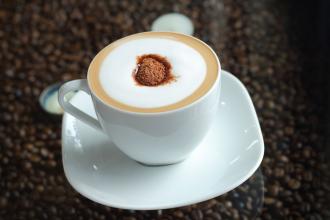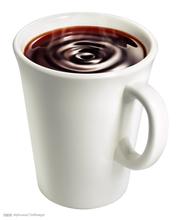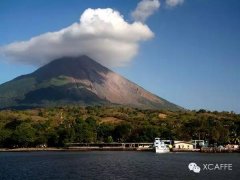Coffee history and culture where does coffee come from?
The eleventh century
In 1000, coffee beans were boiled and drunk, and this method quickly spread throughout the Arab region and became a way of drinking at Islamic religious festivals.
According to the literature records, the Arab philosopher Abisana made a detailed introduction and record of the medicinal blending method and clinical effect of coffee.
In 1200, coffee was spread by a Muslim who was exiled to Yemen for crime, from its place of origin to the Red Sea, Athens, Cairo and other places.
The thirteenth century
The Turks have started baking coffee beans and making coffee. Arabs drink coffee as stomach medicine and cold medicine.
In 1258, Shek Omar, an Arab chief, was inspired by the beautiful sound of a bird eating red fruit in Vasaba and discovered coffee. This is another famous coffee discovery legend: "Arab monks".
In 1300, coffee spread to Iran.
The 14th century
Islam uses coffee as an alternative to alcohol. Subsequently, coffee drinking became popular in Turkey, Syria and other Middle East regions. Families also began to drink coffee. The Arabs began to plant coffee trees.
The 15th century
Turkish coffee appeared and is still cooked in this way in modern times.
In 1454, monks in Athens revealed the secret of boiling coffee beans after discovering the power of coffee during a trip to Ethiopia.
Coffee has developed from formula medicine and functional drink to a popular drink in the Islamic world.
The sixteenth century
In 1505, the Arabs brought coffee to Sri Lanka.
In 1511, all cafes in Mecca were forced to close and believers in Islam were banned from drinking coffee. At the same time, other rulers and religious leaders of the Islamic world have also declared coffee an illegal drink.
Fearing that reactionary remarks during the war would affect morale, the sultan in Istanbul ordered the closure of cafes and threw coffee defenders in a leather bag into the Bosporus as punishment. But still failed to prohibit people's love of coffee, there are still many people are not afraid of death and drink coffee. The ban ended in the end.
After Salim I conquered Egypt in 1517, he brought coffee to Constantinople, and coffee drinking habits have spread throughout the region since then.
In 1529, the Viennese established the first coffee shop in Europe and created a way to drink coffee with milk.
The habit of drinking coffee was formed in Damascus in 1530 and Aleppo in 1532.
In 1538, the sons of Mohamed occupied Yemen. At this time, the local coffee cultivation has been quite large-scale, Turkey on the use of local rich coffee bean resources, a large number of exports to make huge profits.
In 1554, the first authentic and large-scale coffee shop appeared in Constantinople (now Istanbul), Turkey. It was named Canes, which means Coffee House. It is the oldest coffee shop in the world.
In 1587, Abu Dar, an Arab Muslim, wrote "Coffee inheritance Notes", commonly known as "Coffee Origin Book", which is the earliest coffee book in the world.
The seventeenth century
* the first coffee grinder came out in London, England, and coffee is loved by Londoners.
* Arabs try to control the coffee market, but in vain. The Dutch first brought coffee seedlings from Yemen and planted them in their colonies, such as Java, India, Ceylon and other countries.
* A French doctor added milk to coffee for patients to drink, resulting in the invention of Milk Coffee (Coffee of latte), which is delicious and nutritious coffee.
* Turkey attacked Vienna and was defeated, leaving behind a large number of coffee beans. The Viennese enjoyed the coffee beautifully and learned how to make it.
In 1601, the English title "Coffee" about coffee first appeared in the book "Sherleys Travel".
1605
* the first coffee shop in Western Europe appeared in Oxford, England.
* during the Renaissance, some Christians thought coffee was a pagan drink, called it "the devil's drink, and asked the pope to ban it." But after drinking it, the Pope marveled at the fact that there was such a delicious drink in the world, and arranged a ceremony to formally make coffee a Christian drink.
In 1607, coffee was introduced to North America.
In 1615, Venice merchants introduced coffee from Istanbul, Turkey to Europe. Historians generally agree that this year was the time when coffee was first introduced into Europe, and Italy was the first stop for coffee to land in Europe.
In 1641, in the 18th year of Hiroyong, Japan, the Japanese government set up a Dutch store on the island of Nagasaki, which became the stage for the spread of coffee in Japan.
In 1644, coffee was introduced to France by the French traveler La Royne.
In 1645, Venice opened its first coffee shop, which is still in operation today.
In 1650, Jacob, a Turkish Jew, opened the first cafe in Oxford, England. It was named Angel. About four years later, there was a second cafe in Oxford, Johnson. Soon after, a coffee club was born in a private house near the whole Soul College, which later became a famous British royal society.

Important Notice :
前街咖啡 FrontStreet Coffee has moved to new addredd:
FrontStreet Coffee Address: 315,Donghua East Road,GuangZhou
Tel:020 38364473
- Prev

What's the difference between Rwandan coffee and other coffee?
The Tutsi people established a feudal kingdom in the 16th century. Since the middle of the 19th century, Britain, Germany and Belgium invaded one after another and became a German protected place in East Africa in 1890. In 1922, under the Treaty of Versailles, he was entrusted to Belgian rule. In January 1960 Belgium agreed to the autonomy of Rwanda. Independence was declared on July 1, 1962 and a republic was established. After independence, the Tutsi and Hutu tribes occurred many times.
- Next

Lemon Tree Estate, Nicaragua
Nicaragua is located in the middle of Central America. It is the largest country in Central America. It borders Honduras in the north, Costa Rica in the south, the Caribbean Sea in the east and the Pacific Ocean in the west. Its eastern coastal plain, high temperature and rainy tropical marine climate, multi-jungle swamp; western coastal lowlands, there are more active volcanoes. The central and northern parts are highlands, with an annual average temperature of 18℃ and annual precipitation of 1500~2500 mm.
Related
- Does Rose Summer choose Blue, Green or Red? Detailed explanation of Rose Summer Coffee plots and Classification in Panamanian Jade Manor
- What is the difference between the origin, producing area, processing plant, cooperative and manor of coffee beans?
- How fine does the espresso powder fit? how to grind the espresso?
- Sca coffee roasting degree color card coffee roasting degree 8 roasting color values what do you mean?
- The practice of lattes: how to make lattes at home
- Introduction to Indonesian Fine Coffee beans-- Java Coffee producing area of Indonesian Arabica Coffee
- How much will the flavor of light and medium roasted rose summer be expressed? What baking level is rose summer suitable for?
- Introduction to the characteristics of washing, sun-drying or wet-planing coffee commonly used in Mantenin, Indonesia
- Price characteristics of Arabica Coffee Bean Starbucks introduction to Manning Coffee Bean Taste producing area Variety Manor
- What is the authentic Yega flavor? What are the flavor characteristics of the really excellent Yejasuffi coffee beans?

